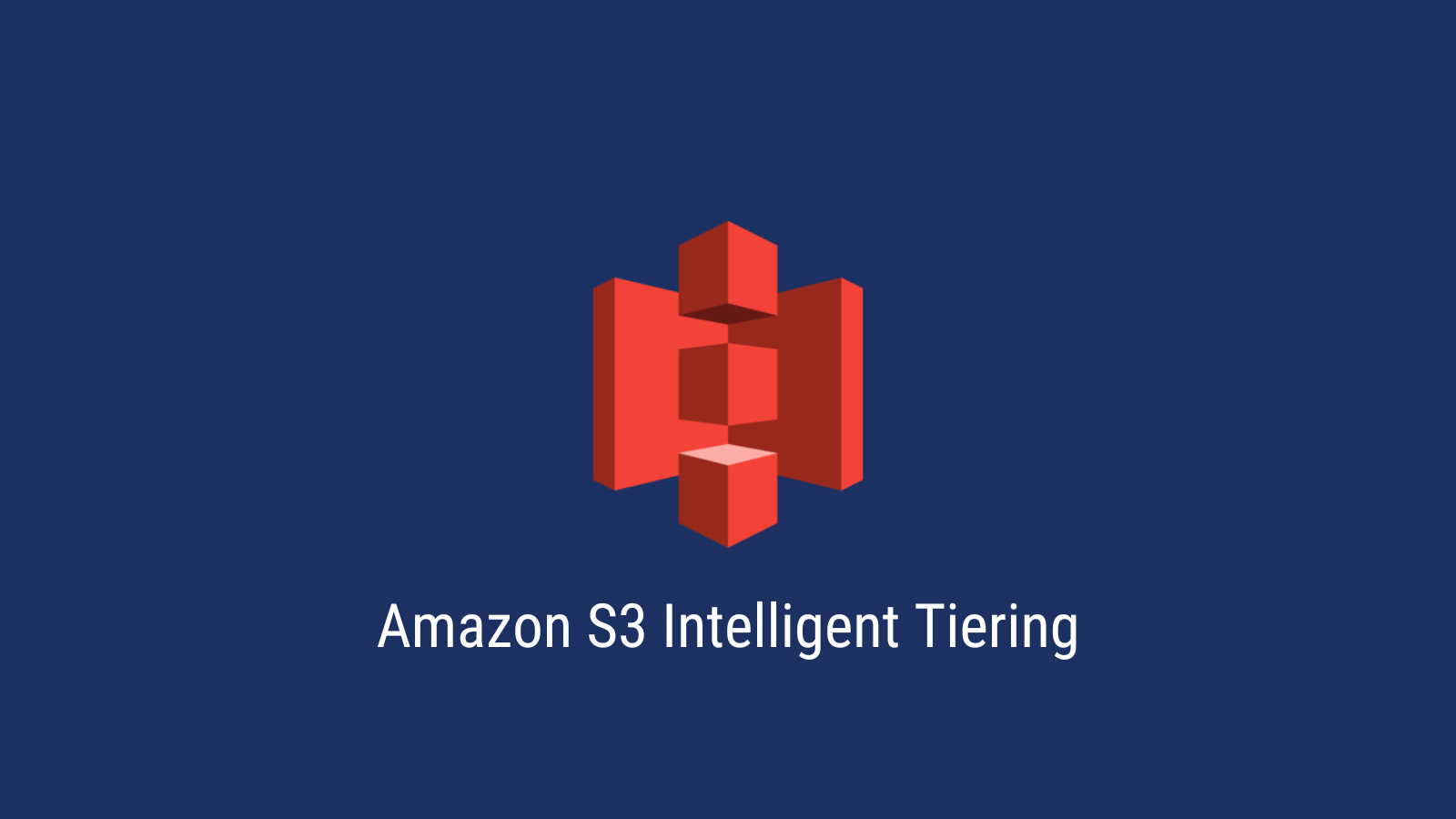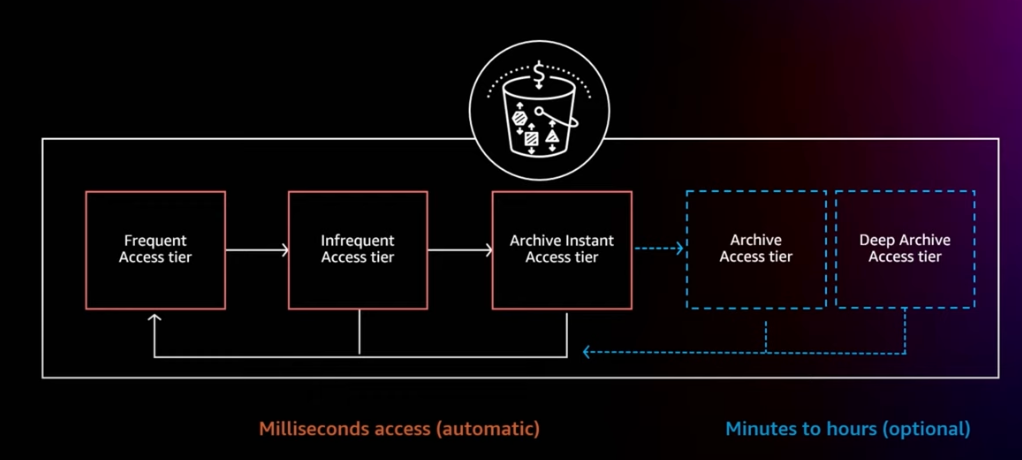The Ultimate Guide to AWS S3 Intelligent Tiering

Introduction
In this guide, we will explore AWS S3 Intelligent Tiering and understand how it works. Our goal is to help you gain a clear understanding of this technology and its many benefits.
AWS S3 Intelligent Tiering is a storage class within Amazon S3 that automatically optimizes costs by intelligently moving data between multiple access tiers based on its usage patterns. By utilizing machine learning algorithms, this service analyzes data access patterns and determines the most suitable storage tier for each object.
In the following sections, we will take a closer look at how AWS S3 Intelligent Tiering functions, including its data tiers and tiering decisions. We will also explore the significant benefits, such as automatic cost savings, improved performance, automatic optimization, and scalability.
Whether you are a small startup or a large enterprise, AWS S3 Intelligent Tiering provides a scalable and efficient solution for managing your data storage needs.
Table of contents
- Introduction
- AWS S3 Storage Classes
- What is AWS S3 Intelligent Tiering?
- How Does It Work?
- Benefits of AWS S3 Intelligent Tiering
- When to use?
- Pricing
- Conclusion
AWS S3 Storage Classes
When storing data in Amazon S3, you have various storage classes to choose from based on your specific needs. Each storage class is designed to optimize for particular use cases, such as performance, cost, durability, and availability.
Here are the commonly used storage classes in AWS S3:
- Standard: This is the default storage class for Amazon S3, offering high durability, availability, and low latency. It is suitable for frequently accessed data that requires fast and immediate access.
- Intelligent Tiering: As discussed earlier, AWS S3 Intelligent Tiering automatically optimizes costs by moving data between frequent access and infrequent access tiers based on usage patterns. It is an excellent choice when you have data with unpredictable access patterns and want to achieve cost savings without sacrificing performance.
- Standard-IA (Infrequent Access): This storage class is designed for less frequently accessed data, with slightly lower durability and availability compared to the Standard class. It provides cost savings for data that is accessed less often but still requires quick retrieval when needed.
- One Zone-IA: Similar to Standard-IA, One Zone-IA is suitable for infrequently accessed data but is stored only in a single AWS Availability Zone. This storage class offers the same durability and availability as Standard-IA but at a lower cost, with a slightly higher risk of data loss in case of an Availability Zone failure.
- Glacier: Glacier is an extremely low-cost storage class for data archiving and long-term retention. It provides high durability but with longer retrieval times (from minutes to hours) compared to the other storage classes. Glacier is ideal for data that is accessed infrequently and can tolerate longer retrieval times.
- Glacier Deep Archive: This is the most cost-effective storage class in AWS S3, intended for scenarios where data access is extremely rare and can tolerate retrieval times of hours. Glacier Deep Archive offers the highest durability but with the longest retrieval times.
What is AWS S3 Intelligent Tiering?
AWS S3 Intelligent Tiering is a storage class within Amazon S3 that optimizes costs by automatically moving data between multiple access tiers based on usage patterns.
With S3 Intelligent tiering, you can ensure that your objects will be in the proper storage tier without the operational overhead of creating and managing complex lifecycle management policies, paying for lifecycle transitions, or worrying about minimum retention durations.
How Does It Work?

AWS S3 Intelligent Tiering offers five storage tiers:
- Frequent Access: This tier is designed for objects that are frequently accessed. It provides low-latency access and is optimized for high-performance retrieval.
- Infrequent Access: Objects that are accessed less frequently are stored in this tier. While the retrieval times may be slightly higher compared to the frequent access tier, it still offers quick access to the data when needed.
- Archive Instant Access: Archive Instant Access is a storage tier within AWS S3 Intelligent Tiering that provides quick access to archived objects with minimal retrieval times.
- Archive Access: This tier is suitable for objects that are accessed infrequently and can tolerate longer retrieval times. Objects in this tier are stored in Glacier, an extremely low-cost storage class designed for data archiving and long-term retention.
- Deep Archive Access: This tier is the most cost-effective option for storing data that is accessed extremely rarely. Objects in this tier are stored in Glacier Deep Archive, which provides the highest durability but with the longest retrieval times.
The ability to automatically move objects between these storage tiers based on their access patterns allows AWS S3 Intelligent Tiering to optimize costs without sacrificing performance or availability. It ensures that your frequently accessed data is stored in the appropriate tier for quick retrieval, while infrequently accessed data is stored in more cost-effective tiers.
S3 Intelligent Tiering automatically moves objects that have not been accessed for 30 consecutive days to the Infrequent Access tier, resulting in cost savings of up to 40%. After 90 days of no access, the objects are further moved to the Archive Instant Access tier, providing even greater savings of up to 68%. If these objects are accessed again, S3 Intelligent-Tiering dynamically moves them back to the Frequent Access tier, ensuring quick and efficient retrieval.
For data that doesn’t require immediate retrieval, you have the option to activate the Deep Archive Access tier, which offers even more significant storage cost savings. When enabled, objects that haven’t been accessed for 180 days are automatically moved to the Deep Archive Access tier, providing up to 95% in cost savings. If these objects are accessed later, S3 Intelligent Tiering moves them back to the Frequent Access tier. It’s important to note that if the object you are retrieving is stored in the Deep Archive tier, you would need to restore a copy using the RestoreObject feature before you can access the object.
Benefits of AWS S3 Intelligent Tiering
Cost Savings
AWS S3 Intelligent Tiering provides significant cost savings by optimizing storage tiers based on access patterns. Users no longer have to manually classify objects or make decisions about storage tiers, reducing administrative overhead and ensuring optimized costs.
Performance
By automatically moving objects between storage tiers, AWS S3 Intelligent Tiering ensures that frequently accessed objects are stored in the faster, more responsive frequent access tier. This results in improved performance and reduced latency for accessing frequently used data.
Automatic Optimization
The automatic nature of AWS S3 Intelligent Tiering eliminates the need for manual intervention. The service continually analyzes access patterns and makes tiering decisions on behalf of the user. This frees up time and resources that can be utilized for other critical tasks.
Scalability
AWS S3 Intelligent Tiering seamlessly scales to accommodate large amounts of data and high access rates. It can handle millions of objects and petabytes of data, making it suitable for organizations of all sizes.
When to use?
Although lifecycle policies can be used to manage objects in S3, there are some downsides associated with that:
- A lifecycle policy applies to all objects in a bucket.
- Management overhead of creating and maintaining lifecycle policies.
- Access patterns for different objects can vary a lot.
It is not feasible for you to identify the usage pattern of every object stored in S3. Amazon S3 Intelligent tiering helps by automatically identifying the object usage pattern and moving objects across different storage classes.
AWS S3 Intelligent Tiering is the ideal storage class where the access patterns of your data are unpredictable or change over time. Here are some situations where this storage class can be advantageous:
- Mixed access patterns: If you have data that experiences both frequent and infrequent access, AWS S3 Intelligent Tiering can automatically optimize costs by moving objects between the frequent access and infrequent access tiers as their access patterns change over time.
- Cost optimization: When you want to reduce storage costs without compromising performance, AWS S3 Intelligent Tiering is an excellent choice. It ensures that frequently accessed data is stored in the most cost-effective tier, while infrequently accessed data is kept in a lower-cost tier.
- Data with evolving access patterns: If your data’s access patterns change over time or are difficult to predict, AWS S3 Intelligent Tiering adjusts the object placement automatically. This eliminates the need for manual monitoring and tiering adjustments.
- Scalability: AWS S3 Intelligent Tiering is designed to handle large-scale data storage requirements. Whether you have a small startup or a large enterprise, this storage class can easily accommodate millions of objects and petabytes of data.
- Simplified management: If you want to simplify storage management and eliminate the need for complex lifecycle management policies, AWS S3 Intelligent Tiering offers an automated solution. The service handles tiering decisions, so you can focus on other critical tasks.
Pricing
When using AWS S3 Intelligent Tiering, certain fees are associated with the service. Let’s take a closer look at the breakdown of Amazon S3 Intelligent Tiering pricing:
- Monitoring fees: You will be charged a monitoring fee of $0.0025 per 1,000 objects each month. This cost is based on the number of objects that are being tracked by S3 Intelligent Tiering.
There is no retrieval fee in S3 Intelligent-Tiering and no fee for moving data between tiers.
It’s important to consider these fees when planning your storage costs with AWS S3 Intelligent Tiering. By understanding the pricing structure, you can make informed decisions about the storage class that best suits your needs.
Conclusion
AWS S3 Intelligent Tiering is a powerful storage class within Amazon S3 that offers numerous benefits for managing data storage.
The significant advantage of AWS S3 Intelligent Tiering is its ability to provide cost savings without sacrificing performance. By analyzing access patterns, the service ensures that frequently accessed data is stored in the appropriate tier for quick retrieval, while infrequently accessed data is moved to more cost-effective tiers. This automatic optimization eliminates the need for manual intervention, saving time and resources.
In conclusion, AWS S3 Intelligent Tiering is a valuable solution for managing data storage in Amazon S3. It offers cost savings, improved performance, automatic optimization, scalability, and simplified management. Whether you have unpredictable access patterns or want to reduce storage costs while maintaining performance, AWS S3 Intelligent Tiering provides a scalable and efficient solution for your data storage needs.